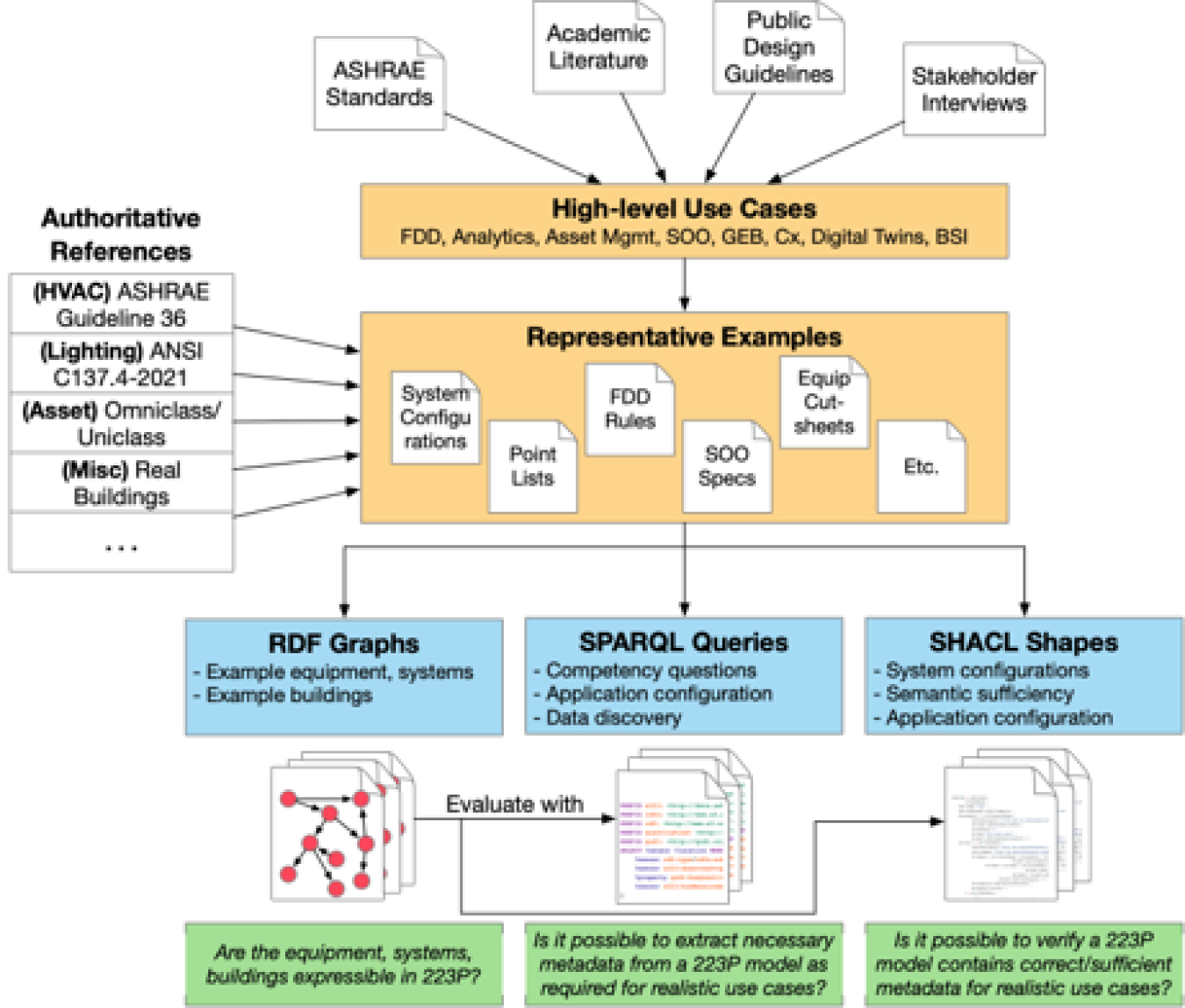
Performers:
-- National Institute of Standards and Technology (NIST) - Gaithersburg, MD
-- National Renewable Energy Laboratory (NREL) - Golden, CO
-- Lawrence Berkeley National Laboratory (LBNL) - Berkeley, CA
-- Pacific Northwest National Laboratory (PNNL) - Portland, OR
-- Cornell University - Ithaca, NY
-- Interoperability Consulting - Alexandria, VA
Performance period: FY20 -
DOE funding: $900,000 in FY24; $5,000,000 to date
Funding vehicle: FY19 and FY22 lab call
Related projects: Project Haystack - Metadata for the Masses, VOLTTRON, Open Building Control, Spawn, Alfalfa, BOPTEST, ConStrain
Project Objective
A significant barrier to the deployment of building control and analytics is the fact that buildings and their systems are bespoke—there are many similarities, but few are exactly alike—and so control and analytics software must be configured individually for each building. Today the process of building software configuration is largely manual. An important step in this process is “point mapping,” identifying the sensors and actuators in the building—usually via their names, e.g., “air handler 1 outlet temp”—and connecting their data streams to the appropriate inputs and outputs of the software. Put simply, building software is not “plug and play”—i.e., self-configuring and installing—in the way that consumer software is.
An important component of making building software plug and play is a “semantic model” sometimes referred to as “semantic metadata,” a standardized, queryable description of the building and its systems. A semantic model does not rely on naming conventions that can vary from one installation to another, but on a structured way of explicitly representing components, their properties, and their relationships. A Semantic Model (capitalized) is a semantic model that is built using Semantic Web (W3C) technologies including the Resource Descriptor Framework (RDF) metadata schema, the Standard Protocol and RDF Query Language (SPARQL) for querying models, and the Shape Constraint Language (SHACL) for validating models.
There are several established and emerging metadata standards, including Haystack, the Brick Schema, and possibly others. Some are semantic. Others are in the process of becoming semantic. None is a consensus standard. This project is developing such a standard, a low-level, granular Semantic Modeling schema for buildings that can be used to formally define existing metadata schemas and tie them together. ASHRAE 223P “Semantic Modeling for Building Control and Monitoring Applications” is being developed with extensive participation from industry and is aiming to eventually become an International Standards Organization (ISO) standard.
In addition to helping shepherd the standard, the project team is developing buildingMOTIF, a library and tool for creating, validating, and translating semantic models in ASHRAE 223P, Brick, and Haystack formats. They are also developing example models for different building and system types and utilities for automatically configuring and installing building software.
Contacts
DOE technology manager: Amir Roth
Principal investigators: Steve Bushby, NIST; Avijit Saha, NREL; Marco Pritoni, LBNL; Michael Poplawski, PNNL

